2021 Underscored the Challenges Southern Rhône & Provence Producers are Facing Amidst Climatic Extremes, Yet These 9 Makers Produced Easily Drinkable, Unexpectedly Complex Dry Rosé (10-Bottle Pack $264) + (3-Bottle Pack $72)
We can all agree that rosé is ideal for warm weather, and we can probably also agree that climate change is leading to a bit too much warm weather. And that does not necessary lead to more rosé, since the primary condition required to maintain the electrifying acidity in grapes is a temperature drop-off near harvest. Without that, rosé becomes flabby, for which the technical term is ‘plonk’.
Gilles Masson, the director of Le Centre du Rosé in Vidauban, France, expresses the problem like this: “With climate change, freshness, fruit, aromatics, and acidity will decrease, alcohol will increase, and the wines will become heftier. This has made some producers favor sites that are cooler year-round, including those that are higher in altitude or north-facing. But warming temperatures year-round are a threat.”
2021 proved to be a particularly challenging vintage for rosé producers in southern France, with a wet winter followed by an unseasonably hot spring, followed by an extensive frost in April, so we’ve taken on a challenge ourselves: To find those vignerons who successfully navigated the choppy waters and produced exemplary rosés despite the roadblocks. These packages represent three blockbuster rosé-producing regions that applied a host of new methods to combat climate change; experimenting with new sites and varieties and slightly altering house styles in order to keep their heads above the pink waters.
Inside the 2021 Vintage
For French winemakers, warm winters are more of an issue than sweltering summer, although with increasingly regularity, they are happening in the same growing season. In 2021, the summer was not aggressively hot, but the preceding winter encouraged early bud break, much of which was subsequently lost to the frost of April 8. The smaller diurnal variation (with warmer night temperatures) during the summer of 2021 also impacted ripening and development. The cool summer helped preserve the acidity while dry conditions concentrated the juice; vignerons who were successful adapted to the constantly changing prospects, sorting heavily, while négociants frequently relied on those grape varieties less badly hit.
Climate Change Challenges Rosé Wines of Southern France
But the effects of climate change are hardly restricted to a single season. In recent years, each individual vintage has presented its own unique set of trials, an inevitable offshoot of rising temperatures in France, which on average have increased 1.5°C; predictions are that things will get worse. Of course, it’s not limited to France, but the delicacy of the vineyard ecosystem in Southern France is being battered by heat waves, drought and fires, there are also spring frosts, hail, and excessive rain with damage wrought by one or more in any given year. In November 2021, climatic extremes reduced overall French wine production by 27 % in 2021 (over 2020) and the vintage proved to be one of French wine’s most difficult years on record.
We are pleased to offer one bottle of each of the following ten wines for a package price of $264.
Provence: Vibrant Shades of Pale
Now the good news: The world’s vineyards still churn out 600 million gallons of rosé a year and in France, the number one rosé producer is Provence.
Tucked into the southeastern corner of France, Provence covers 125 miles of coastland—no vineyard in the appellation is more than 25 miles from the Mediterranean. And, as suits the French Riviera, 3000 + hours of sunshine annually (paired with strong Mistral winds to keep things dry), allow vines to thrive in a hot, maritime climate without risk of fungal disease. Even so, as conditions become even hotter, a new way of thinking has begun to animate this deeply traditional region: Older varietals like Carignan, Barbaroux and Calitor being replaced by more commercially viable grapes like Grenache, Syrah and even Cabernet Sauvignon, although native standbys Mourvèdre, Tibouren and Vermentino continue to hold their ground.
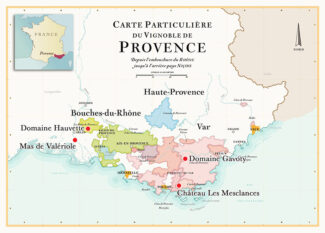
There are pockets of well-received red and white wines throughout Provence, but the name of the game is pink; 82% of the Provençal output is rosé, nearly all crisply acidic and bone dry and in color, ranging from pale coral when made predominantly from Grenache to more deeply tinted Syrah-based wines. In fact, each shade has an official name based on a color chart developed by the Centre de Recherche and d’Expérimentation sur le Vin Rosé: Peach, Melon, Mango, Pomelo, Mandarin and Redcurrant.
Domaine Gavoty
Roselyn Gavoty is the eighth generation of Gavoty to helm the family domain since her ancestor Philémon acquired it in 1806. With more than 120 picturesque acres of vine snaking along the Issole River in the northwestern sector of the Côtes de Provence, Gavoty runs a polycultural farm that the family has worked without synthetic chemicals for decades.
A champion of the saignée method of rosé production, which involves bleeding off a portion of red must, she considers texture to be the most important element in a great Côtes de Provence rosé. She’s also outspoken about the region’s descent into commercialism, with a sea of wine gulped down by hordes of what she calls ‘consommateurs mouton.’ In point of fact, however quaffable her rosé is, it has the thought-provoking depth to warrant sipping rather than gulping.
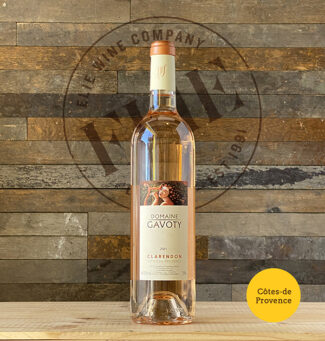 Domaine Gavoty ‘Clarendon’, Côtes-de-Provence Rosé 2021 ($37)
Domaine Gavoty ‘Clarendon’, Côtes-de-Provence Rosé 2021 ($37)
Besides making wine, Roselyn’s grandfather Bernard Gavoty was a well-known organist, musicologist, music critic, and talk show host, and we drink this wine in remembrance of him—he wrote under the nom de plume ‘Clarendon.’ The cuvée is made from the oldest Grenache, Syrah, and Carignan vines in the domain, which date back to the early 1960s. A complex and voluptuous nose of grapefruit, raspberry and white peach with a shivery crisp palate and a mouthwatering finish.
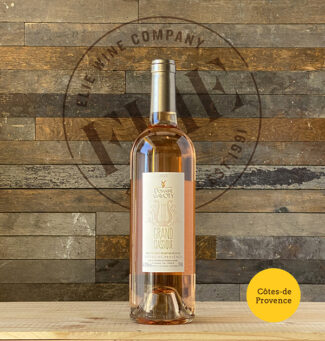 Domaine Gavoty ‘Grand Classique’, Côtes-de-Provence Rosé 2021 ($27)
Domaine Gavoty ‘Grand Classique’, Côtes-de-Provence Rosé 2021 ($27)
90% Cinsault, 7% Grenache and 3% Carignan: The grapes are not pressed immediately but macerate for several hours first. The saignée and first-press juice are vinified separately, allowing Roselyn the flexibility to blend the more succulent saignée with the more angular and architectural pressed juice to achieve the precise textural qualities she seeks. The wine shows suave flavors of red cherries, red currant, yellow flowers, strawberry, melon and Bartlett pear with a nice minerality throughout.
Château Les Mesclances
In the Provençal dialect, ‘Mesclances’ refers to the confluence of rivers, and the estate, a mere two miles from the sea in the commune of La Crau, is situated between two streams, the Réal Martin and Gapeau, which originate in the limestone massif of the Sainte Baume. The property consists of 75 contiguous acres and is a picturesque ideal of Mediterranean culture and pretty rolling topography. And certainly, this geography determines appellation status: Wines from the estate’s plain are IGP Méditerranée while the foot of the slope yields AOP Côtes de Provence, and the steeper incline of the hill carries the rare Appellation Côtes-de-Provence ‘La Londe’. Only 20 estates count La Londe in their holdings.
Mesclances is owned by Arnaud de Villeneuve Bargemon, whose family has run the domain since the French revolution. In April 2018, Alexandre Le Corguillé joined the team as estate manager, and as is to be expected, most of the vineyard production is dedicated to rosé.
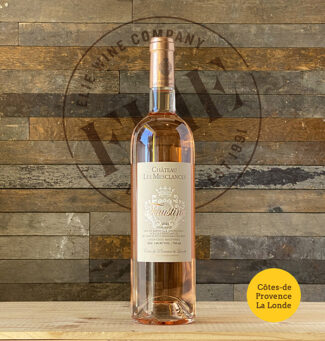 Château Les Mesclances ‘Faustine’, Côtes-de-Provence La Londe Rosé 2021 ($37)
Château Les Mesclances ‘Faustine’, Côtes-de-Provence La Londe Rosé 2021 ($37)
81% Grenache, 13% Syrah and 6% Mourvèdre with the Syrah and Mourvèdre made via saignée. From the exceptional ‘La Londe’ sub-appellation, the wine is somewhat darker in hue—the Grenache received a full 15 hours of maceration. This wine is dense, packed with red berries and citrus with a peppery acidity to bring freshness to the finish.
Mas de Valériole
Ten miles south of the ancient city of Arles, the Michel family tends the lovely Mas de Valériole, a hundred acre estate founded in the early 15th century and purchased by the Michel family in the late 1950s. Around 2000, brothers Jean-Paul and Patrick Michel turned their energies to improving the land through organic viticultural practices and refining their approach in the cellar.
Mas de Valériole’s vineyards cover eighty of the hundred acres, and are planted on a patchwork of soil types: sand, clay, limestone, and alluvial loam deposited by the Grand Rhône. The reliably steady wind blowing in from the Mediterranean mitigates the heat, facilitating their chemical-free approach to farming and ensuring balanced alcohol levels in the wines.
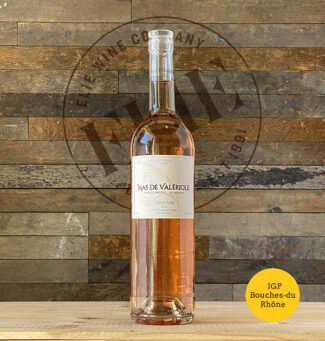 Mas de Valériole ‘Grand Mar’, IGP Bouches-du-Rhône – Terre de Camargue Rosé 2021 ($23)
Mas de Valériole ‘Grand Mar’, IGP Bouches-du-Rhône – Terre de Camargue Rosé 2021 ($23)
If you are not a grape nerd, you may never have heard of the varietal Caladoc, a cross between Grenache and Malbec created by Paul Truel in 1958 at Institut National de la Recherche Agronomique. It is not allowed in any AOP, and ‘Grand Mar’ is nothing but Caladoc, accounting for the IGP designation, formerly Vin de Pays. It was fermented with indigenous yeasts—unusual for rosé—in stainless steel tanks. The wine shows vibrant notes of ripe strawberry and lime zest surrounded by ruby-red grapefruit and white peach aromas that blends with crackling acidity.
Southern Rhône: The Dark Side of Rosé
So dark in color are some of the Southern Rhône’s most celebrated rosés that they nearly defy the ‘blush’ concept. Of the vivid ruby tones found in Tavel, for example, Thomas Giubbi, co-president of the Syndicat Viticole de l’Appellation Tavel winemakers association, said, “We think of our wines as light red wines.”
But that isn’t fair to the category. In it very soul, rosé qualifies as neither red wine nor white wine. It may be (although rarely is; the practice is frowned upon) a blend of the two, but in nearly all cases, it is produced by crushing red-skinned, white-fleshed grapes and allowing a period of maceration lasting from a few hours to a couple days in which the juice is ‘dyed’ to a specific level; alternately, there is méthode saignée, which is essentially fermented free-run juice from red wine pressings.
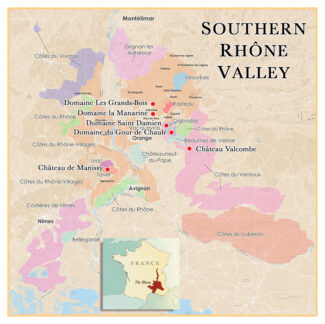
Tavel
To say ‘Tavel rosé’ is to repeat yourself since, by law, all wine from Tavel is rosé. Creeping along the right bank of the Rhône River in the Gard, the soils of Tavel are a potpourri of small stones (called galets roulés), fine sand and fractured limestone, and the hot, dry climate allows the grapes (predominantly Grenache, Syrah and Clairette) to achieve full phenolic ripeness. As a result, Tavel rosé tends to be richer and more deeply colored than the salmon-pink wines from other regions, with an associated complexity of flavor in the glass.
Château de Manissy
The estate (which has belonged to the Congregation of Missionary Fathers of the Holy Family since the 18th century) operates under the motto, ‘Auspice Clara Manissy Stella’, or, ‘beneath the protection of the bright star of Manissy.’ Since 2004, it has also operated under the auspices of Florian André, whose winemaking and cellar skills have upheld the Château’s reputation for Tête de Cuvée barrel-aged rosé.
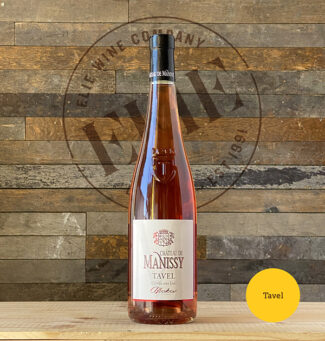 Château de Manissy ‘Cuvée des Lys’, Tavel 2021 ($19)
Château de Manissy ‘Cuvée des Lys’, Tavel 2021 ($19)
is 60% Grenache, 30% Clairette, 10% Syrah from vines that average 45 years old grown in clay, river rock and fine-grained sand. It opens with aromas of white flowers and spring strawberries, filling out in a silky blend of watermelon and pomegranate; it is rich in minerality and garrigue (sage and oregano) and is intriguingly peppery on the finish.
Gigondas
Like nearby Châteauneuf-Du-Pape, Gigondas depends heavily on Grenache. Based on appellation laws, both the reds and the rosés must be made from up to 80% Grenache, with at least 15% comprised of Syrah and Mourvèdre. The grapes are grown at a higher elevation than Châteauneuf’s, often in terraced vineyards threaded with limestone under the looming Dentelles de Montmirail, with rocky, sandy, free-draining soils on the flatter, lower-lying land to the north and west.
Domaine du Gour de Chaulé
Situated in the heart of Gigondas, Domaine du Gour de Chaulé was founded in 1900 by Eugene Bonfils and is now run by his great-granddaughter Stéphanie Fumoso. Credit Bonfils’ daughter Rolande Beaume with reinventing the estate (formerly a grower that sold grapes to négociants) and kicking off the estate-bottled tradition; thank Rolande’s daughter Aline for expanding this practice exponentially.
The domain comprises 37 acres, 25 of which are within Gigondas with the remainder in the surrounding communes of Vacqueyras and Violes. Aline Bonfils believes strongly that Grenache is the heart and soul of Gigondas and she has transmitted this philosophy to her daughter, Stéphanie. As a result, 85% of the vineyards are planted to Grenache, with approximately 10% dedicated to Syrah and Mourvèdre and the balance planted to Cinsault. The vines are quite old; many were planted in 1956 and some of the domain’s 23 parcels were planted a century ago.
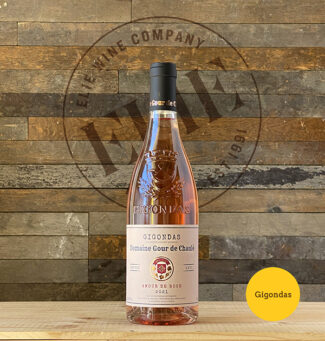 Domaine du Gour de Chaulé ‘Cuvée Amour de Rosé’, Gigondas Rosé 2021 ($37)
Domaine du Gour de Chaulé ‘Cuvée Amour de Rosé’, Gigondas Rosé 2021 ($37)
Luxurious and rich, the wine is made from the direct-press method, without malolactic, using 40% Grenache, 40% Cinsault, 20 % Mourvèdre. The wine shows wild strawberries and summer compote with hints of white pepper and garrigue. Limited production, with only 1200 bottles released to the American market.
Domaine Saint Damien
Spreading over 112 acres in Gigondas, Plan de Dieu and Côtes-du-Rhône Villages, Domaine Saint Damien is the brainchild of Joël Saurel and his son Romain who have lifted the estate—named for the patron saint of doctors—from humble roots to becoming one of the most reputable domains in Gigondas.
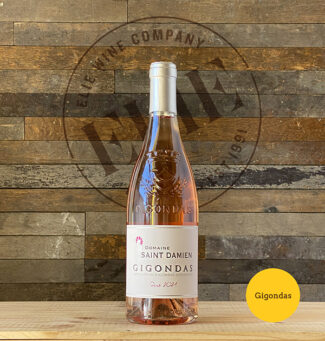 Domaine Saint Damien, Gigondas Rosé 2021 ($29)
Domaine Saint Damien, Gigondas Rosé 2021 ($29)
80% Cinsault (planted in 1970) and 20% Syrah (planted in 2000) in the organically-farmed lieu-dit of La Moutte. This small production wine undergoes cold maceration for 6 hours followed by slow pneumatic pressing and fermentation in stainless steel tanks with occasional lees stirring. Delicately tinted, it shows rose petal, honeydew, lychee, pineapple and garrigue with a hint of pepper and crushed rock on the finish.
Côtes-du-Rhône
Côtes-du-Rhône is one of the largest single appellation regions in the world, covering millions of acres and producing millions of bottles of wine of varying degrees of quality. In Southern Rhône, it encompasses the majority of vineyards and includes hallowed names like Gigondas, Vacqueyras and Châteauneuf-du-Pape. The latter wines prefer to use their individual, highly specific ‘cru’ names, but the truth is, many generic Côtes du Rhônes may come from plots just outside official ‘Villages’ boundaries—some only across the road or a few vine rows away from top vineyards—and among them, you can find wines with nearly the same level of richness at a fraction of the cost.
Domaine la Manarine
Manarine was created by Gilles Gasq in 2001 after he learned his trade as an assistant to Paul Jeune, proprietor of Domaine Monpertuis in Châteauneuf-du-Pape; the winery and majority of the vineyards are located within the commune of Travaillan northeast of Orange.
The domain covers 44 acres situated on what is known as the ‘Le Plan de Dieu’ (God’s work field) where the underlying soil contains a deep layer of hard limestone galets that facilitate drainage, retain heat and radiate it back during the cooler nights. The climate is typically Mediterranean: relatively hot and dry with scant rainfall that usually comes during late-August thunderstorms, providing the vines with the water necessary to finish the maturation process.
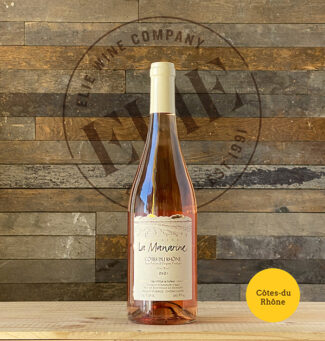 Domaine la Manarine, Côtes-du-Rhône Rosé 2021 ($20)
Domaine la Manarine, Côtes-du-Rhône Rosé 2021 ($20)
50% Grenache, 40% Mourvèdre and 10% Syrah spontaneously fermented in stainless steel, racked following fermentation and aged on fine lees until assemblage. Crisp notes of wild strawberry, black currant, tangerine with herbal undertones.
Domaine Les Grands Bois
If more sommeliers became vignerons, the world might see more low-yield, unfiltered gems like those of Marc Besnardeau, who worked as a wine steward in Paris before following his dream into the vineyard. With wife Mireille Farjon, he took over the estate planted in 1929 by Mireille’s grandfather, well-situated between St. Cecile and Cairanne.
After selling initially to négociants, the couple began bottling at the estate in 1997. They replanted some fields with Syrah and Mourvèdre, bought new vineyards, and expanded their holdings to its current size, 116 acres spread across seven communes: Sainte Cécile les Vignes, Lagarde-Paréol, Suze la Rousse, Tulette, Cairanne, Rasteau and Travaillan.
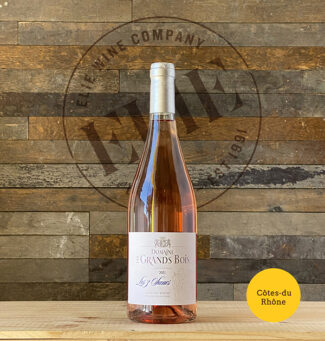 Domaine Les Grands Bois ‘Les 3 Sœurs’, Côtes-du-Rhône Rosé 2021 ($15)
Domaine Les Grands Bois ‘Les 3 Sœurs’, Côtes-du-Rhône Rosé 2021 ($15)
grown on chalky clay and harvested from vines ranging in age from 15-60 years. Bold and undeniably fruity, the wine shows deeper savory notes of fresh earth, mushrooms, wildflowers and crushed stone.
Ventoux
Ventoux is a large wine region in the far southeast of the southern Rhône, 25 miles northeast of Avignon and bordering Provence. Covering 51 communes, the vines are planted on the western slopes of Mt. Ventoux, a sort of ‘stray’ Alp removed from the range and towering over the landscape for miles around.
Terroir and varietals are typical for Rhône, although noteworthy are the region’s Muscat produced for table grapes, which has its own AOP—Muscat du Ventoux.
Château Valcombe
Originally owned by Paul Jeune of Domaine Monpertuis, he opted to sell to Luc and Cendrine Guénard who worked under Jeune’s tutelage during the transition period. They now are proudly independent vignerons with a compulsion to further improve this jewel; their first efforts can be seen and tasted in the 2009 vintage.
Certified organic in 2013, the 70 acres of Valcombe are situated in the shadow of the mountain, reaching one thousand feet. Four red grape varieties (Syrah, Carignan, Grenache and Cinsault) balance four white grape varieties (Clairette, Grenache Blanc, Roussanne and Bourboulenc); many vines over sixty years old, although parcels of Carignan and Grenache were planted in 1936. Soils are essentially limestone covered with the area’s famous galets, although deep in the subsoil, an unusual blue-inflected clay helps define the unique characteristics of Valcombe wines.
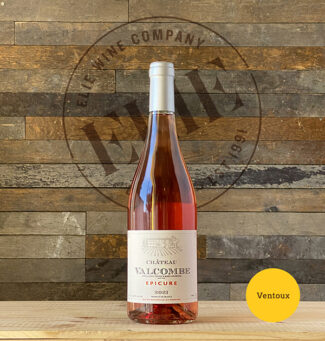 Château Valcombe ‘Epicure’, Ventoux Rosé 2021 ($20)
Château Valcombe ‘Epicure’, Ventoux Rosé 2021 ($20)
Harvested exclusively by hand with a strict sorting in the vineyard, the wine is 60% Grenache, 20% Cinsault and 10% Carignan (and a touch of Clairette) from vines about 40 years old. The wine displays ripe strawberries, watermelon and pink grapefruit over a steel and mineral core. Bone dry and very refreshing.
…. Add one of each of the following Three Loire Rosé for a package price of $72.
The Loire Valley: The Savory Side Of Rosé
Rosé de Loire adds yet another dimension to French blush; extending across the Anjou and Touraine AOPs, it covers about 2000 acres and is responsible for more than a million gallons of rosé every year. Its color lends itself to dramatic descriptors ranging from ‘flamingo pink with a hint of poppy’ to ‘gleaming raspberry pink with a glimmer of violet.’ These wines are generally dry, but there is a subset that is off-dry and another subset, Crémant, that sparkles. There is even a ‘Primeur’ (or ‘Nouveau’) style, a much fruitier wine that is almost entirely free of tannins—a result of being fermented using the Beaujolais method of carbonic maceration.
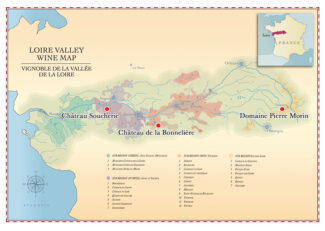
Like the red wines of Loire, the principle grapes used in the rosé are Cabernet Franc, Cabernet Sauvignon, Grolleau (Noir and Gris), Pineau d’Aunis, Gamay and/or Pinot Noir. Beyond color, Rosé de Loire is delightful elegance in a glass; Rosé d’Anjou in particular is noted for its terroir, stretching from Saumur in the east to Champtoceaux in the west, on the dividing line between the carboniferous soils of the Armorican Massif and the whiter, limestone-rich soils of the southern Paris Basin.
Sancerre
To many, red grapes in Sancerre sounds like an oxymoron, but connoisseurs know that a quarter of Sancerre’s vineyards are Pinot Noir. Like so many French wine regions that had the rug pulled out from beneath them during the phylloxera blight of mid-19th century, Sancerre found itself having to replant all its vineyards, which had—up to that time—been a red-wine producing zone; Pouilly-Fumé, just across the river, was the Sauvignon Blanc powerhouse. For a multitude of reasons, most of the estates replanted using that varietal, and as the white wines of Sancerre soon eclipsed those of her sister commune, there was not much incentive to look back. The reds became an afterthought, and Pinot Noir is not the sort of grape that suffers scorn easily. In the ‘90s, however, certain producers (notably Alphonse Mellot Jr.) began to experiment with lower and more selective yields, and since then, the quality has improved astronomically, and the rosés built entirely from Pinot Noir are an entirely new avenue for exploration.
Domaine Pierre Morin
If ever a cheerleader for low yields and hand-harvesting existed, it’s Pierre Morin. In every vintage, combining severe pruning and selection at harvest, he averages 40 hl/ha—in France, the legally allowed average is 52 hl/ha. It’s an obsession that pays off in a portfolio filled with textured, terroir-driven Sancerres.
Morin is a small, family-run domain in Bué, arguably the most prestigious village in the whole of Sancerre and one of only a few communes allowed to label their wines ‘Sancerre.’ Pierre took over from his father Gérard in 2004, and practices Lutte Raisonnée farming, never using herbicides or chemical fertilizers.
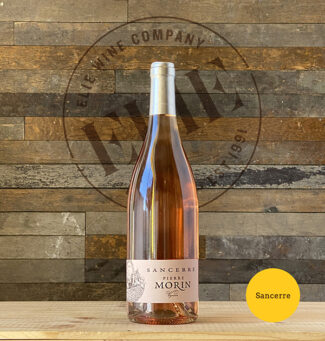 Domaine Pierre Morin, Sancerre Rosé 2021 ($29)
Domaine Pierre Morin, Sancerre Rosé 2021 ($29)
100% Pinot Noir pressed immediately upon harvest to produce a vibrant and finesse-driven wine with supple notes of sweet strawberry and rose pastille and a touch of bitter citrus pith. Medium-bodied, elegant and lively, with racy acidity and crunchy minerality.
Chinon
The confluence of the Loire and Vienne rivers is a demarcation where the influence of the Atlantic sweeps through the two valleys. Vineyards are generally oriented on east to west slopes with sunny southern exposures, creating a microclimate ideal for Cabernet Franc. As a result, the medieval town of Chinon—and the appellation that takes its name—is known for rich reds and vibrant pink wines made from that variety. Beyond the climate, Chinon boasts unique soil; tuffeau jaune is a fragile sedimentary rock made of sand and highly porous marine fossils, meaning that it absorbs water rapidly and disseminates it slowly, ideal for grape cultivation.
Château de la Bonnelière
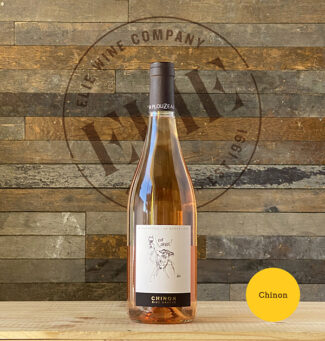 Château de la Bonnelière ‘M Plouzeau – Rive Gauche’, Chinon Rosé 2021 ($16)
Château de la Bonnelière ‘M Plouzeau – Rive Gauche’, Chinon Rosé 2021 ($16)
‘Rive Gauche’ translates literally as ‘Left Bank’, and here, of course, refers not to the Seine in Paris but to the Vienne in Loire. Marc Plouzeau’s vinification philosophy emphasizes fruit rather than tannins—ideal for the production of rosé. Likewise, the estate’s Argilo-Calcalre soil, with sun-reflecting flint on the surface and plenty of limestone underneath (Plouzeau refers to his terroir as ‘privileged’) produces wines of great complexity. His 2021 is a sensationally complex rosé from Cabernet Franc showing notes of limestone, tart cranberry, red currants, raspberry, pomegranate and pink grapefruit.
Anjou
Anjou sprawls across 128 communes, mostly south of the towns of Angers in the west and Saumur in the east. Monasteries played the largest role in developing Anjou’s wine trade, as each enclave had its own walled vineyard, but it was French royalty who secured the region’s reputation, beginning nearly a thousand years ago when Henry Plantagenet became King Henry II of England. Anjou’s terroir is a matter of black and white: it’s divided into two subsoils as different as day and night. First, Anjou Noir, composed of blackish, dark, schist-based soil along the south-eastern edge of the Massif Armoricain, then, Anjou Blanc, lighter-colored soils made up of the altered chalk at the south-western extremity of the Paris Basin.
Château Soucherie
The Soucherie château itself is an architectural gem, an 18th century castle with an outstanding view of the Layon valley. 20 minutes south of Angers in the heart of the Loire and surrounded by the villages of Rochefort-sur-Loire, Beaulieu-sur-Layon and Saint Lambert du Lattay, the 70 acres of south-facing vineyards are planted on limestone, clay and schist.
Owner Roger Beguinot is assisted by the Maître de Chai, Thibaud Boudignon, who sings the praises of organic ‘agriculture integrée’, practiced through the domain’s single-vineyard sites, including the 70-year-old vines in Chaume: “All the work of the vineyards is done manually,” he says, “from stripping to budding, from tying to harvesting. For our sweet wines, the grapes are picked selectively, only 100% botrytis and chaptalized. Our white wines are vinified and aged in oak barrels where nothing is left to chance—the origin of the wood (Allier, Tronçais forest, Nièvre, etc.), and the expertise of the cooper is chosen in accordance with the type of wine and the nature of the soil.”
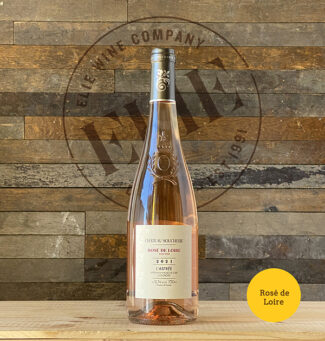 Château Soucherie ‘L’Astrée’, Rosé de Loire 2021 ($27)
Château Soucherie ‘L’Astrée’, Rosé de Loire 2021 ($27)
A dry, mineral-driven rosé built from 70% Grolleau and 30% Gamay worth experiencing for the blend alone. Rose-petal pink with cherry and raspberry-red reflections, the wine is precise, with clean acidity, ultra-bright and complex
A Note …
Rosé Wine From Provence Deserves to Live a Little
The simple statement that rosé does not benefit from (or improve with) aging is exactly that: Simple. It presupposes either that rosé is a non-serious summertime quaff or that even when made by serious winemakers, the goal is to produce fast, fresh and fruity wines with tannins not meant for the cellar, but for the dinner table, like the rosés d’assiette of Provence. That both statements can be true does not negate a third: Many full-bodied pink wines become more interesting with time in a bottle.
And that’s because no wine ‘improves’ with age—‘better’ is a subjective opinion based on personal preferences. Wine changes with age, and whether you appreciate those changes, or seek them out, is a matter of taste. Since all rosé is built from red grapes, most of them (especially in France) age-worthy blockbusters like Grenache, Cinsault, Mourvèdre, Syrah, Pinot Noir, et al. This means that these wines already have the DNA to produce the same tertiary flavors that they would develop if vinified red. Licorice, dried flowers and the deeply ingrained minerality that is the signet of the complex limestone and clay soils of France are all flavors that deepen and mature in wines made from the varieties that build rosé.
All wine not intended for immediate consumption should be stored correctly, at a constant temperature and with as little movement as possible. This holds true for white wine, red wine, and by extension, rosé.
Domaine Hauvette
Nestled among the foothills of Les Alpilles, amid landscapes made famous by Van Gogh, Domaine Hauvette served as a backdrop for Dominique Hauvette’s re-birth. Formerly a Savoie lawyer, she opted to leave the rat race, seek out more sunshine, indulge her passion for raising horses and the study of oenology. Thirty-some years later, Dominique now has 42 acres of vines and a low-tech and decisively non-interventionist stance which has earned her an international reputation for making benchmark natural wines.
She describes her situation and terroir like this: “Domaine Hauvette is two islands of vineyards within a 1.5 miles radius around the cellar; all the vineyards are on the northern side of the Alpilles, a white bright limestone mount culminating at 1,600 ft. Facing north, the microclimate is a little cooler, and strangely a little less affected by the Mistral that bumps over the Alpilles to blow stronger on the southern side. The terroir is mostly lacustrine limestone from the Cretaceous, full of fossils. Some veins of red clay run through certain plots. One specificity of the area is the ‘Terres Blanches’ also called ‘Tuffeau,’ which have nothing in common with either the Sancerre’s Kimmeridgian marls nor the Touraine Tuffeau. Here, it refers to compressed veins of this Cretaceous limestone so hard and impenetrable that it looks like cement. The first time I saw, I thought somebody had poured cement and covered it back with top soil! It requires a special tool to crack apart the layers when planting, but when I saw what it could produce, it became my favorite vineyard.”
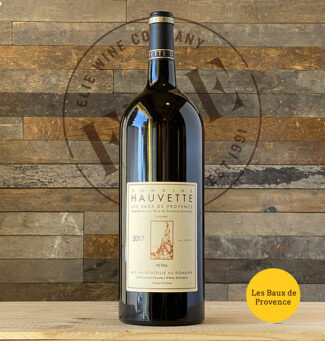 Domaine Hauvette ‘Petra’, Les Baux de Provence 2017 MAGNUM (1.5 Liter) ($85)
Domaine Hauvette ‘Petra’, Les Baux de Provence 2017 MAGNUM (1.5 Liter) ($85)
70% Cinsault, 15% Syrah and 15% Grenache, with malolactic completed in concrete eggs. Pale copper with flecks of salmon in color, the nose shows discreet sandalwood and orange zest with a brimming palate of apple, pink grapefruit and white pepper.
Theatrical large-format bottles such as this magnum are generally meant to allow a long and luxuriant aging process, and as such, are used mostly for red wines. This may seem counterintuitive for a rosé, mostly intended for early drinking while the acidity remains fresh and the fruit, forward. But the mere fact that it slows down aging means that the wine keeps fresher longer, and a small amount of air contact develops flavor, aroma, and color. In ‘Petra’, secondary flavors have already developed from malolactic fermentation on the lees; matured judiciously, the fruit will remain while tertiary flavors (the hallmark of the grapes used herein) should appear—savory notes of coffee, spiced almonds and candied fruit.
Plus, experimentation is fun, and even serious rosé is meant to be fun.
- - -
Posted on 2022.06.24 in Sancerre, Gigondas, Tavel, Côte-de-Provence, Côtes-du-Rhône, Rosé de Loire, Anjou, France, Wine-Aid Packages, Loire, Provence, Southern Rhone
Featured Wines
- Notebook: A’Boudt Town
- Saturday Sips Wines
- Saturday Sips Review Club
- The Champagne Society
- Wine-Aid Packages
Wine Regions
Grape Varieties
Aglianico, Albarino, Albarín Blanco, Albarín Tinto, Albillo, Aleatico, Arbanne, Aubun, Barbarossa, barbera, Beaune, Biancu Gentile, bourboulenc, Cabernet Franc, Cabernet Sauvignon, Caino, Caladoc, Calvi, Carcajolu-Neru, Carignan, Chablis, Chardonnay, Chasselas, Clairette, Corvina, Cot, Counoise, Erbamat, Ferrol, Fiano, Frappato, Friulano, Fromenteau, Fumin, Garnacha, Gewurztraminer, Godello, Graciano, Grenache, Grolleau, Groppello, Juan Garcia, Lambrusco, Loureira, Macabeo, Macabou, Malvasia, Malvasia Nera, Marsanne, Marselan, Marzemino, Melon de Bourgogne, Merlot, Mondeuse, Montanaccia, Montepulciano, Morescola, Morescono, Moscatell, Muscadelle, Muscat, Natural, Nero d'Avola, Parellada, Patrimonio, Petit Meslier, Petit Verdot, Pineau d'Aunis, Pinot Auxerrois, Pinot Blanc, Pinot Gris, Pinot Meunier, Pinot Noir, Poulsard, Prieto Picudo, Rondinella, Rousanne, Roussanne, Sangiovese, Sauvignon Blanc, Savignin, Semillon, Souson, Sparkling, Sumoll, Sylvaner, Syrah, Tannat, Tempranillo, Trebbiano, Trebbiano Valtenesi, Treixadura, Trousseau, Ugni Blanc, vaccarèse, Verdicchio, Vermentino, Viognier, Viura, Xarel-loWines & Events by Date
- April 2024
- March 2024
- February 2024
- January 2024
- December 2023
- November 2023
- October 2023
- September 2023
- August 2023
- July 2023
- June 2023
- May 2023
- April 2023
- March 2023
- February 2023
- January 2023
- December 2022
- November 2022
- October 2022
- September 2022
- August 2022
- July 2022
- June 2022
- May 2022
- April 2022
- March 2022
- February 2022
- January 2022
- December 2021
- November 2021
- October 2021
- September 2021
- August 2021
- July 2021
- June 2021
- May 2021
- April 2021
- March 2021
- February 2021
- January 2021
- December 2020
- November 2020
- October 2020
- September 2020
- August 2020
- July 2020
- June 2020
- May 2020
- April 2020
- March 2020
- February 2020
- January 2020
- December 2019
- November 2019
- October 2019
- September 2019
- August 2019
- July 2019
- June 2019
- May 2019
- April 2019
- March 2019
- February 2019
- January 2019
- December 2018
- November 2018
- October 2018
- September 2018
- August 2018
- July 2018
- June 2018
- May 2018
- April 2018
- March 2018
- February 2018
- January 2018
- December 2017
- November 2017
- October 2017
- September 2017
- August 2017
- July 2017
- June 2017
- May 2017
- April 2017
- March 2017
- February 2017
- January 2017
- December 2016
- November 2016
- October 2016
- September 2016
- August 2016
- July 2016
- June 2016
- May 2016
- April 2016
- March 2016
- February 2016
- January 2016
- December 2015
- November 2015
- October 2015
- September 2015
- August 2015
- July 2015
- June 2015
- May 2015
- April 2015
- March 2015
- February 2015
- January 2015
- December 2014
- November 2014
- October 2014
- September 2014
- August 2014
- July 2014
- June 2014
- April 2014
- March 2014
- February 2014
- January 2014
- December 2013
- November 2013
- October 2013
- September 2013
- August 2013
- July 2013
- June 2013
- May 2013
- April 2013
- March 2013
- February 2013
- January 2013
- December 2012
- November 2012
- October 2012
- February 2004
Search



